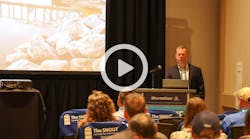A 16-year-old student entered a science fair sponsored by Google and came up with a potentially game-changing creation: a super absorbent polymer that could help crops withstand drought.
The student, Kiara Nirghin, attends St. Martin’s High School in Johannesburg, South Africa. Her country is in the midst of a severe drought, one that has left the agricultural union asking for more than a billion dollars in government aid to help farmers.
The SAP she created, once added to the soil, will hold hundreds of times its weight in water. Unlike other SAPs, this one is biodegradable—and cheap to make. The ingredients? Things you commonly discard in your own kitchen: avocado skins and orange peels.
“I started researching what an SAP was, and what they all had in common was a chain molecule polysaccharide,” Kiara says in this article. “I found that orange peel has 64% polysaccharide and also the gelling agent pectin, so I saw it as a good [option]. I used avocado skin due to the oil.”
In her written submission to the contest, she explains that the polymer needs to be cross-linked, which usually requires use of a chemical like hydrochloric acid or sulphur. She used an alternative method: She left the mixture out in the sun. “I have explored an organic cross-linking method using UV light and heat. Emulsion polymerization was then conducted by using natural oil found in avocado peels and adding it to boiled orange peels. The product is then left in the sun, utilizing photo polymerization.”
Last week her project made it into the contest’s final round. You can see other winners from Google’s contest here.
About the Author
Janice Kaspersen
Janice Kaspersen is the former editor of Erosion Control and Stormwater magazines.


